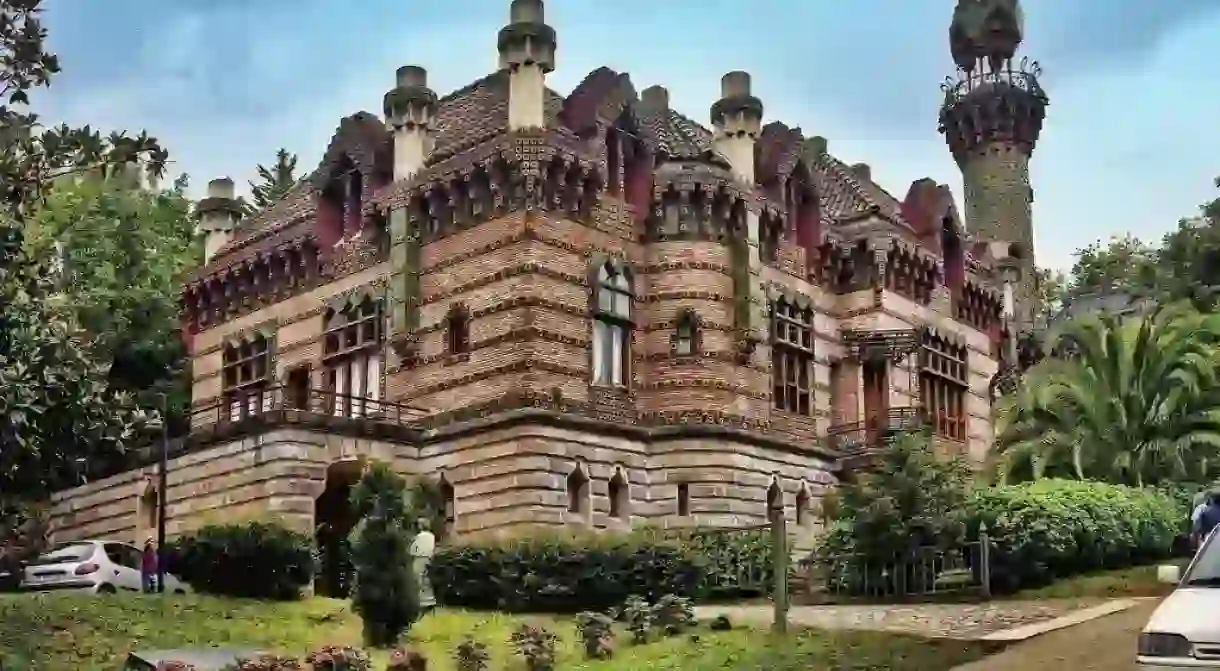Where to Find Gaudí's Buildings Outside of Barcelona

Antoni Gaudí was an architect who lived from 1852 to 1926. He was born in Reus, a small town around 110km southwest of Barcelona. He is best known for his Catalan Modernisme style of architecture, which is very colourful, eye-catching and uses inspiration from nature. His most famous buildings can mainly be seen in the city of Barcelona and include places such as the Sagrada Família, Casa Batlló and La Pedrera. There are a few little-known Gaudí structures, however, that can be found outside of the Catalan capital.
Gaudí buildings outside of Barcelona:
Most of Gaudí’s buildings to be found outside of Barcelona are located in northern Spain, in the regions of Cantabria and Castilla y León. Here, we take a look at those amazing Gaudí designs you can visit outside of Barcelona.
El Capricho, Comillas
El Capricho or Villa Quijano, as it is also known, is located in Comillas, in the autonomous region of Cantabria, located between the Basque Country and Galicia. It was built between 1883 and 1885 and was commissioned by Máximo Díaz de Quijano who was from Cantabria, but made his fortune in Latin America. The work is considered to be part of Gaudí’s Oriental Stage, as it is filled with design inspiration from places such as Japan and India, as well as Moorish Islamic art, found widely across Andalusia. Interestingly, Gaudí never actually visited El Capricho; the entire building was was done under the direction of his assistant Cristóbal Cascante. Sadly, Máximo Díaz de Quijano never got to live in his mansion either, as he died the same year it was completed. Today, the house is a museum, open for visitors to see Gaudí’s stunning design up close.

Episcopal Palace of Astorga
Both Modernist and Neo-Gothic in style, this amazing structure looks more like a castle, complete with turrets, battlements and even a moat. It is located in the town of Astorga in the region of Castilla y León, around 55km southwest of the city of León. The Episcopal Palace was commissioned by the Bishop of Astorga who was originally from Reus, Gaudí’s hometown. Gaudí designed everything down to the last detail, even the three sculptures that can be found in the moat. Its inside is characterised by stained glass windows, ornate columns and wide arched ceilings. The first stone of the building was laid in 1887, but it encountered many problems along the way, including the death of the Bishop and the death of Gaudí himself in 1926, so actually wasn’t completed until the 1960s. At that time, it was completed by the architect Luis de Querejeta. Today, the palace is open for the public and also houses the Museo de los Caminos – the museum of the Camino de Santiago pilgrimage route, which passes through Astorga.

Casa Botines
The Casa Botines is located in the city of León. The story of this building really begins in 1886, even though construction on it didn’t start until 1892. Two merchants by the names of Simón Fernández Fernández and Mariano Andrés González Luna wanted a new building in the city to house their businesses, so they found a piece of land on Plaza San Marcelo, which they wanted to buy. However, because of legal issues, they weren’t able to do so until 1891. Eusebi Güell, Gaudí’s patron and the man who commissioned many of his works, recommended Gaudí for the job, and finally in 1892 construction began. The medieval fortress-like structure, which was inspired by León’s Gothic Cathedral, only took ten months to finish. One of its most striking features is the statue of Sant Jordi (Saint George) slaying the dragon, just above the doorway. The building was owned by the Caja España (the Spanish bank) for many years, until it finally opened to the public for the first time in 125 years as a museum in April of 2017.














